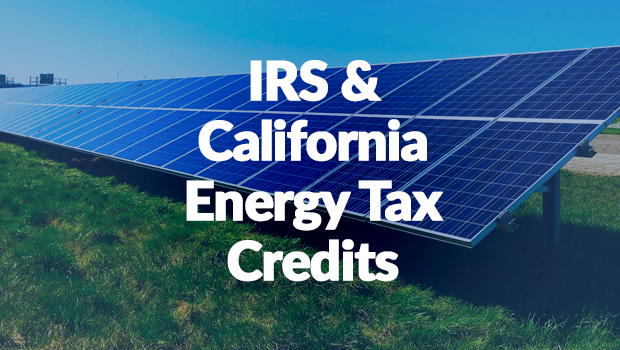Whether motivated by economic and/or environmental reasons, state and federal governments often offer financial incentives to individuals and businesses to utilize clean energy. One of the biggest monetary tools for promoting clean energy is through the use of energy tax credits.
What Is an Energy Tax Credit?
A tax credit is a tax benefit that reduces a taxpayer’s income or increases their refund. This is a dollar-for-dollar benefit, unlike a tax deduction.
Tax credits can be refundable and nonrefundable. Refundable tax credits are preferable because if someone’s tax bill is less than the refundable credit, they get the difference in a refund. With a nonrefundable credit, if the nonrefundable credit exceeds the taxpayer’s tax bill, they don’t get back the difference in the form of a refund.
An energy tax credit is a tax credit that a state, local or federal government provides a taxpayer because the taxpayer invests in or purchases clean, efficient or alternative energy technology. These tax credits exist because the government wants to promote energy savings.
Federal Energy Tax Credits
For the average individual taxpayer, some of the popular IRS energy tax credits involve residential homes.
First, there’s the Energy Efficient Home Improvement Credit. This tax credit applies when an eligible taxpayer makes certain clean energy upgrades to their home. Some of these upgrades include installing more energy-efficient:
- Insulation, doors, windows or skylights
- Water heaters
- Boilers, furnaces and heat pumps
- Air conditioners
The tax credit amount is a percentage of the total upgrade or improvement cost. In 2022, this was 30%, for a lifetime maximum of $500. From 2023 to 2032, the percentage remains at 30%, but the limit has been increased to $1,200 ($2,000 for some stoves and boilers) and there’s no lifetime limit.
Second, there’s the Residential Clean Energy Credit. This is similar to the Energy Efficient Home Improvement Credit, except it typically applies to more expensive upgrades, like:
- Geothermal, wind and solar power generation
- Fuel cells
- Solar water heaters
- Battery storage systems
The credit amount is a percentage of the installation cost. From 2022 to 2032, this is 30%, with no annual or lifetime limit.
To take advantage of these tax credits, taxpayers must claim them for the tax year the eligible home upgrades were made.
California Energy Tax Credits
For individual taxpayers, California doesn’t have many energy tax credits. However, there are plenty of tax exemptions, rebates and discounts available. For example, there’s the Homeowner Managing Energy Savings (HOMES) rebate program. Eligible California residents will receive performance-based rebates for whole-house energy retrofits.
With respect to vehicles, there’s the Partial Sales and Use Tax Exemption for Clean Cars 4 All Program. Buyers of zero or near-zero-emission motor vehicles receive partial sales tax and use tax exemptions on their eligible vehicle purchasea made from 2023 to 2027.
Conclusion
The above discussion just scratches the surface concerning the energy tax credits and other financial benefits available to California residents. To learn more about these and other tax credits, contact your tax professional.
Kienitz Tax Law is here to help you with your tax issues. Schedule your FREE consultation today!

